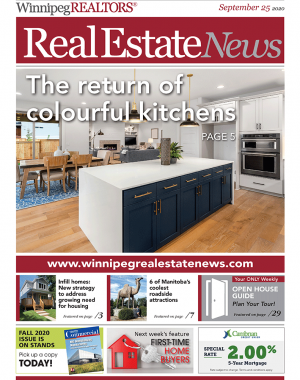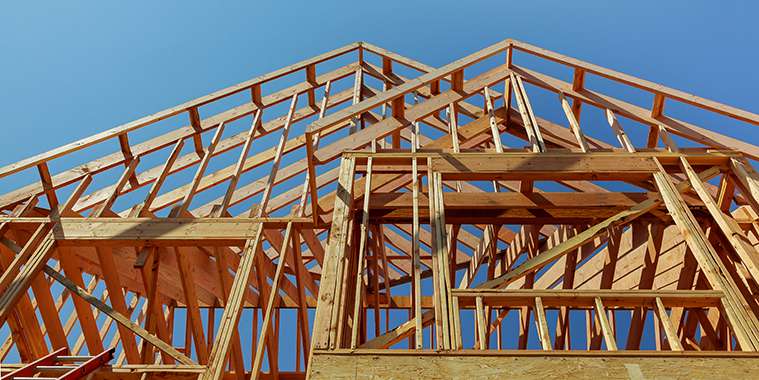By Peter Squire
Earlier this year, the City of Winnipeg Comprehensive Housing Assessment Report indicated that approximately 8% of dwellings in Winnipeg are in need of major repair, with the majority concentrated among older housing stock.
So it is a matter of how — not if — the City of Winnipeg is committed to making residential infill a key part of their updated OurWinnipeg and Complete Communities Direction Strategy 2.0 — a citywide secondary plan outlining the City’s 25-year vision for land use and development. In fact, the City is calling for residential infill to make up to 50% of new construction in built-up areas with the other half in new emerging communities or greenfield land.
To this end, a key direction of the new strategy is to accommodate infill development within established neighbourhoods, or what is referred to as “mature communities”. These are communities largely developed prior to the 1950s. They contain over 80,000 single-family detached homes with a median age of 73 years, which require more and more upkeep as they continue to age.
WinnipegREALTORS® is certainly familiar with older housing stock in need of repair or replacement, having established Housing Opportunity Partnership (HOP) in the late 1990s in response to seeing Winnipeg’s West End easternmost neighbourhoods (e.g. Spence) suffer a serious decline in the condition of their housing stock and subsequent loss of value of those homes. HOP remains active today building new infill homes on 25-foot lots where older, badly deteriorated homes were demolished.
Thanks to intervention by a number of housing advocate initiatives alongside HOP, these West End neighbourhoods have experienced positive renewal and price appreciation since then, significantly increasing City tax assessment rolls. But more needs to be done. Reinvestment in our City’s housing stock is critical to renewing Winnipeg as it grows to be a City of one million people.
Not only is infill a fiscal sustainability issue — in being more efficient to better utilize and maximize existing infrastructure and support mature neighbourhoods with all of their inherent assets and services (e.g. public transit and local businesses) — it is a matter of necessity given that current new housing starts in emerging communities will not meet the projected 160,000 people and 77,000 new dwellings required over the next 20 years.
It is also worth noting that from 1971 to 2016, mature communities decreased in population by 82,000. A compact urban form is, and will be, necessary to afford to maintain a larger City with all of its infrastructure requirements so it continues to function effectively and sustainably.
You only have to look at what is happening now with many infills being built across the City in established communities to realize there is a strong desire to live in these more centrally located parts of the City. More evidence in this regard comes from the last few months of MLS® sales activity. There has been unprecedented demand for housing on WinnipegREALTORS® MLS® in many Winnipeg established neighbourhoods.
September is not showing any let-up with continued strong demand for resale housing.
As University of Winnipeg geography professor Jino Distasio said recently to the Winnipeg Free Press, “There’s a clear public interest in adding properties to existing neighbourhoods, since they can use previously built infrastructure and replace aging homes while also help accommodate a growing local population.”
The Winnipeg Chamber of Commerce has also weighed in on the importance of supporting infill development as a way to grow our City in a more cost efficient manner. The following paragraph is an excerpt from the Chamber’s submission on OurWinnipeg:
“Increasing density and making more efficient use of existing infrastructure and City services is vital to that mission. Not only will it save money (reducing the need for further tax increases), but it will lead to the creation of more dynamic urban neighbourhoods that provide new business opportunities and help attract the young talent we need to grow our economy.”
It’s time to get on with it and set in place the clarity, certainty and predictability a residential infill strategy with clear guidelines can bring for all concerned, especially the residents who live in established neighbourhoods and want to ensure the preservation of the character and local feel and context of the streets they live on.
In the proposed Complete Communities Direction Strategy 2.0, the City of Winnipeg is recommending a residential infill strategy that “will direct the location and design of residential infill development in Mature Communities through the use of planning and design guidelines”.
The Residential Infill Strategy also lists goals that it wishes to achieve. They are:
• Provide a diversity of housing options for all residents, at all life stages, in all neighbourhoods;
• Maintain a balanced mix of housing within each neighbourhood;
• Distribute additional residential density amongst mature neighbourhoods;
• Contribute to the physical renewal and revitalization of older neighbourhoods;
• Support transit and maximize walkability;
• Make more efficient use of existing municipal infrastructure and community facilities;
• Increase population levels to support retention of neighbourhood schools, commercial areas and main streets (i.e. urban mixed-use corridors);
• Respect and enhance the character of existing neighbourhoods through compatible development;
It also goes on to state that it may provide additional and more detailed locational criteria than that identified in its by-law to better respond to area-specific planning considerations.
Considerable public engagement has already occured regarding the development of this strategy, with sessions held to show how different housing options and targeted approaches to developing infill is possible without compromising appropriate and contextual small-scale infill in a mature community.
Newly released this month are the long-awaited infill development guidelines. The Small Scale and Low-Rise Residential Development Guidelines for Mature Communities are available for review at www.winnipeg.ca
Would you like a chance to offer input? There is an online survey to fill out as the City wants to get your feedback on this considerable undertaking. The deadline to participate is October 15. Also, check out opportunities to meet project team members in person at the Cindy Klassen Recreational Complex on Wednesday, September 30. There are also Zoom webinar sessions that you can register for being held on Sunday, October 4 from 2:00 to 3:30 p.m. and Wednesday, October 7 from 7:00 to 8:30 p.m.
Peter Squire is WinnipegREALTORS® Vice-President, External Relations & Market Intelligence.



